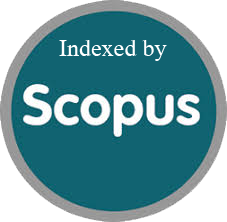M.R.H. A New Era in Magnetic Head Design
Authors:
Article info
85 - 91
Keywords
Abstract
The conventional method for reading/writing information from/on a magnetic media (e.g. magnetic tapes in audio and video recorders, computers etc.) uses what is called an inductive head. This consists of several turns of enemelled wire, wound on a specially prepared former as shown in Fig.1. To write (record) information on the magnetic tape, a modulated current signal is injected into the coil. The current treats (induces) a magnetic field at the free ends of the former (poles) which in turn aligns the magnetic particles deposited on the tape, subsequently producing a record of the injected signal. To retrieve the information (i.e. playback the recorded signals) the prerecorded tape is swiped across the poles of the inductive head. In this case the reverse of the write cycle occurs i.e. the magnetic field from the tape influence the former in such a manner as to cause a current flow through the coil having the same form as the recorded signal. A major disadvantage of this type of head is its speed dependence. Since the head senses the rate of change of field, d?/dt (and not the field itself ? its output becomes greatly dependent' on the speed of the tape. Therefore, in tape system, and using an inductive head, it becomes necessary to use some form of electronic equalization in order to correct errors in the signal, resulting from any variations in the speed of the tape. In addition, because of their bulkiness, they become difficult to implement in applications where high packing densities (video tapes) or multi-track system (computer tapes) are used. A new generation of heads have been developed. The heads use the magneto-resistive effect for the read operation and a simplified inductive approach for the write operation.
Husni, M. R. (1986). M.R.H. A New Era in Magnetic Head Design. An-Najah University Journal for Research - A (Natural Sciences), 3(1), 85–91. https://doi.org/10.35552/anujr.a.3.1.455
[1]M. R. Husni, “M.R.H. A New Era in Magnetic Head Design,” An-Najah University Journal for Research - A (Natural Sciences), vol. 3, no. 1, pp. 85–91, Jan. 1986, doi: 10.35552/anujr.a.3.1.455.
Husni, Mazen R. “M.R.H. A New Era in Magnetic Head Design.” An-Najah University Journal for Research - A (Natural Sciences), vol. 3, no. 1, Jan. 1986, pp. 85–91. Crossref, https://doi.org/10.35552/anujr.a.3.1.455.
1.Husni MR. M.R.H. A New Era in Magnetic Head Design. An-Najah University Journal for Research - A (Natural Sciences) [Internet]. 1986 Jan;3(1):85–91. Available from: http://dx.doi.org/10.35552/anujr.a.3.1.455
Husni, Mazen R. “M.R.H. A New Era in Magnetic Head Design.” An-Najah University Journal for Research - A (Natural Sciences) 3, no. 1 (January 1986): 85–91. https://doi.org/10.35552/anujr.a.3.1.455.
M.R.H. A New Era in Magnetic Head Design
المؤلفون:
معلومات المقال
85 - 91
الكلمات الإفتتاحية
الملخص
The conventional method for reading/writing information from/on a magnetic media (e.g. magnetic tapes in audio and video recorders, computers etc.) uses what is called an inductive head. This consists of several turns of enemelled wire, wound on a specially prepared former as shown in Fig.1. To write (record) information on the magnetic tape, a modulated current signal is injected into the coil. The current treats (induces) a magnetic field at the free ends of the former (poles) which in turn aligns the magnetic particles deposited on the tape, subsequently producing a record of the injected signal. To retrieve the information (i.e. playback the recorded signals) the prerecorded tape is swiped across the poles of the inductive head. In this case the reverse of the write cycle occurs i.e. the magnetic field from the tape influence the former in such a manner as to cause a current flow through the coil having the same form as the recorded signal. A major disadvantage of this type of head is its speed dependence. Since the head senses the rate of change of field, d?/dt (and not the field itself ? its output becomes greatly dependent' on the speed of the tape. Therefore, in tape system, and using an inductive head, it becomes necessary to use some form of electronic equalization in order to correct errors in the signal, resulting from any variations in the speed of the tape. In addition, because of their bulkiness, they become difficult to implement in applications where high packing densities (video tapes) or multi-track system (computer tapes) are used. A new generation of heads have been developed. The heads use the magneto-resistive effect for the read operation and a simplified inductive approach for the write operation.
Husni, M. R. (1986). M.R.H. A New Era in Magnetic Head Design. An-Najah University Journal for Research - A (Natural Sciences), 3(1), 85–91. https://doi.org/10.35552/anujr.a.3.1.455
[1]M. R. Husni, “M.R.H. A New Era in Magnetic Head Design,” An-Najah University Journal for Research - A (Natural Sciences), vol. 3, no. 1, pp. 85–91, Jan. 1986, doi: 10.35552/anujr.a.3.1.455.
Husni, Mazen R. “M.R.H. A New Era in Magnetic Head Design.” An-Najah University Journal for Research - A (Natural Sciences), vol. 3, no. 1, Jan. 1986, pp. 85–91. Crossref, https://doi.org/10.35552/anujr.a.3.1.455.
1.Husni MR. M.R.H. A New Era in Magnetic Head Design. An-Najah University Journal for Research - A (Natural Sciences) [Internet]. 1986 Jan;3(1):85–91. Available from: http://dx.doi.org/10.35552/anujr.a.3.1.455
Husni, Mazen R. “M.R.H. A New Era in Magnetic Head Design.” An-Najah University Journal for Research - A (Natural Sciences) 3, no. 1 (January 1986): 85–91. https://doi.org/10.35552/anujr.a.3.1.455.

Since 2019
Cite Score (Scopus): 0.5
Time to First Decision: 3 Days
Submission to Acceptance: 64 Days
Acceptance to Publication: 10 Days
Acceptance Rate: 28%
Call for Papers:
Sustainable Materials and Chemistry for Energy and Environmental Applications
Why should you
Publish With Us?
An-Najah National University
Nablus, Palestine
Nablus, Palestine
- P.O. Box
- 7, 707
- Fax
- (970)(9)2345982
- Tel.
- (970)(9)2345560
- (970)(9)2345113/5/6/7-Ext. 2628
- [email protected]
- EIC
- Prof. Waleed Sweileh
An-Najah University Journal for Research - A (Natural Sciences) by An-Najah University, Nablus, Palestine is licensed under CC BY-NC 4.0

